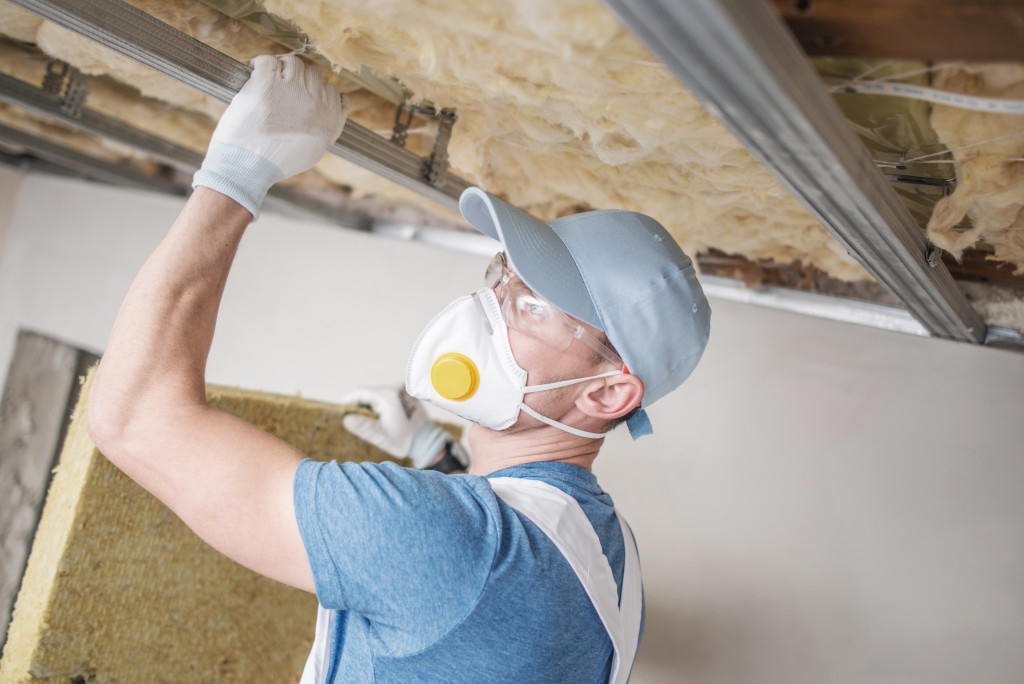- Invest in a reliable home security system to deter potential intruders.
- Practice fire safety by installing smoke detectors and fire extinguishers.
- Implement childproofing measures such as locks on hazardous cabinets and secure furniture to the wall.
- Prioritize regular maintenance and inspections of electrical systems, plumbing, gas lines, foundations, and structures.
- Create an emergency preparedness plan to be ready for unprecedented events.
Ensuring safety in your home is of utmost importance for your and your family’s well-being. Your home should be a sanctuary where you can relax and feel secure. You can create a safer living environment by implementing a few essential measures. This guide will discuss five important tips to help you enhance the safety of your home. From installing security systems to practicing fire safety, these measures will provide peace of mind and a secure place to call home.
1. Enhance Your Home Security

The first step in ensuring safety in your home is to focus on enhancing your security measures. Install a reliable home security system that includes burglar alarms, motion sensors, and security cameras. These systems act as deterrents and provide you with a sense of protection. Make sure to place visible signage indicating the presence of a security system, as this can discourage potential intruders. Additionally, reinforce entry points such as doors and windows with sturdy locks and consider installing security bars or grilles for added protection.
2. Practice Fire Safety
Fires can be devastating, causing property damage and endangering lives. To prevent fire hazards in your home, implement several fire safety measures. Start by installing smoke detectors on each level of your home, particularly in bedrooms and common areas. Regularly check the batteries and test the functionality of these detectors to ensure they are in working order. Additionally, equip your home with fire extinguishers, placing them in easily accessible areas such as the kitchen and garage. Educate your family members about fire safety protocols, including how to escape in case of a fire and the importance of not leaving candles or cooking appliances unattended.
3. Implement Childproofing Measures
If you have young children at home, it is crucial to implement childproofing measures to minimize the risk of accidents and injuries. Begin by securing cabinets and drawers containing hazardous materials such as cleaning supplies or sharp objects with childproof locks. Install safety gates at the top and bottom of staircases to prevent falls, and cover electrical outlets with childproof covers. Furthermore, secure heavy furniture like bookcases and television stands to the wall to prevent tipping accidents. Regularly inspect your home for potential hazards and adjust as your child develops new abilities.
4. Consider Maintenance and Inspection
Regular maintenance and inspection of your home’s systems and structures are essential to prevent potential safety hazards. By addressing maintenance needs promptly, you can prevent accidents and ensure the safety of your home.
Here are some tips for addressing your maintenance:
Inspect Electrical Systems Regularly

Ensuring the safety of your home begins with inspecting your electrical systems for potential hazards. Check outlets and exposed wires for frayed or loose connections, and look out for any signs of overheating, such as discoloration or burning smells. If you are unsure about completing this inspection, consider hiring a professional electrician to help ensure everything is in working order. They will check your wiring, outlets, and circuit breakers for any potential issues.
Assess Plumbing and Gas Lines
Your home’s plumbing and gas lines should also be inspected regularly for leaks or other irregularities that could cause damage or injury. Look around sinks and showers for water spots or any color changes that could indicate a leak. Ensure gas lines are securely attached and inspect intake valves for any signs of tampering or damage. These inspections can help prevent costly future repairs and protect your family from potential gas leaks and other hazards.
Check Foundations and Structures
A strong foundation is key to ensuring the safety of your home, so it’s important to check it regularly for signs of wear or stress. Look around windows, doors, and corners for cracks or water damage that could compromise its integrity. Inspect roofs and decks for loose boards or sagging supports that need repairs, as these can create unsafe conditions if left unchecked. Taking the time to inspect your home’s structure will help keep you safe in the long run.
Stay Up to Date With Maintenance Tasks
In addition to inspecting your home for potential safety hazards, it’s also important to stay up to date with maintenance tasks such as cleaning gutters, replacing filters, and trimming trees near your home. These tasks can help prevent accidents and keep your home in good condition. Inspect outdoor areas regularly for debris or loose items that could potentially be hazardous as well as any signs of animals or pests. Taking care of minor issues now will help you avoid major disruptions later on.
5. Create an Emergency Preparedness Plan
Preparing for emergencies is crucial in safeguarding your home and family. Develop an emergency preparedness plan that includes evacuation routes, a designated meeting point, and important contact information. Make sure everyone in your house knows the emergency plan and conduct regular drills to ensure everyone is aware of what to do in an emergency. Additionally, assemble an emergency kit with essential supplies such as first aid items, non-perishable food, water, flashlights, and batteries. Preparing for unforeseen circumstances will help you respond effectively and minimize potential risks.
In Closing
Safety should be a top priority in your home. By following these five important tips, you can enhance the security and well-being of your family. Invest in a reliable home security system, practice fire safety measures, childproof your home if needed, prioritize regular maintenance and inspections, and create an emergency preparedness plan. Safety is an ongoing process, so addressing potential hazards is essential. These proactive steps can create a secure and safe environment for you and your loved ones.

